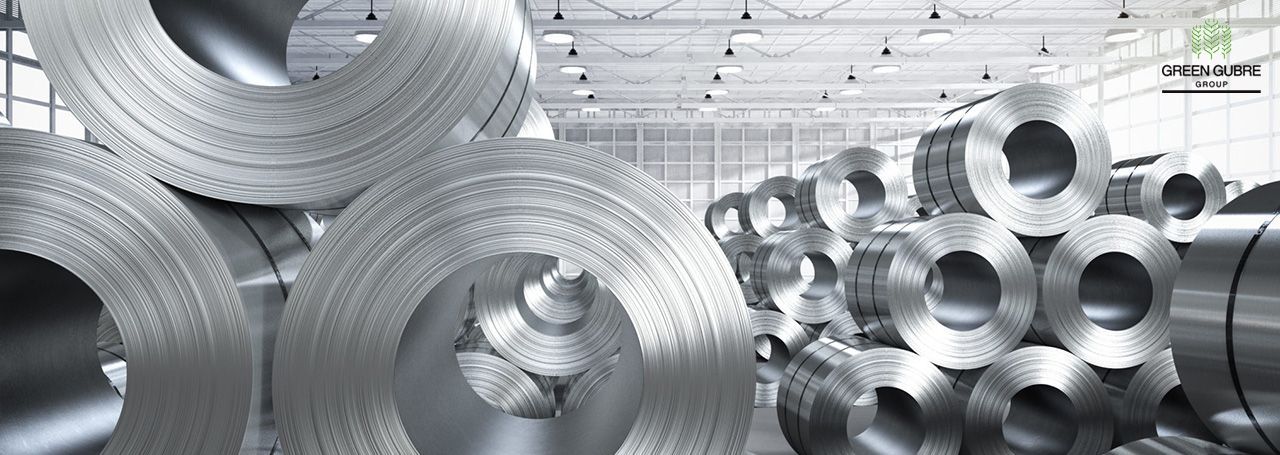The Role of Galvanized Steel in Construction and Industrial Applications
The Role of Galvanized Steel in Construction and Industrial Applications

Galvanized steel is an essential material widely used in construction, infrastructure, and various industrial applications due to its superior corrosion resistance and durability. This type of steel is coated with a protective layer of zinc, which helps prevent rusting and extends its lifespan, making it an ideal choice for outdoor structures, roofing, automotive parts, and agricultural equipment. In this blog, we explore the benefits, applications, and importance of galvanized steel in modern industrial and construction practices.
What is
Galvanized Steel?
Galvanized steel is produced through a process called galvanization, where steel is coated with a layer of zinc to protect it from corrosion. This zinc layer acts as a barrier between the steel and environmental factors such as moisture, salt, and chemicals that cause rust. The two most common methods of galvanizing steel are hot-dip galvanizing, where steel is dipped into molten zinc, and electro-galvanizing, which uses an electrical process to apply the zinc coating. Galvanized steel is known for its durability, longevity, and ability to withstand harsh environmental conditions.
Types of
Galvanized Steel:
1. Hot-dip galvanized Steel:
This method involves immersing the steel in molten zinc, creating a thick, durable coating that provides superior protection against corrosion. Hot-dip galvanized steel is commonly used in construction, outdoor structures, and heavy machinery.
2. Electro-Galvanized Steel:
Electro-galvanized steel is produced by applying a thin zinc coating using an electrical process. This method offers a smoother surface and is often used in applications where appearance is important, such as automotive parts and appliances.
3. Galvannealed Steel:
This type of steel is similar to hot-dip galvanized steel, but it undergoes an additional heat treatment process that improves paint adhesion. It is commonly used in automotive bodies and other applications where painting or coating is required.
Key Benefits of
Galvanized Steel:
1. Exceptional Corrosion Resistance:
The primary benefit of galvanized steel is its resistance to corrosion. The zinc coating protects the steel from rust and oxidation, even in harsh environments. This makes it ideal for outdoor use, where exposure to moisture and other corrosive elements is common.
2. Durability and Longevity:
Galvanized steel offers a long lifespan, often lasting decades without significant maintenance. Its ability to resist rusting and weathering makes it a cost-effective solution for long-term projects in construction and industrial settings.
3. Low Maintenance Requirements:
Due to its protective zinc coating, galvanized steel requires minimal maintenance over its lifetime. This reduces the need for frequent repairs or replacements, making it a cost-effective material for large-scale projects.
4. Sustainability and Environmental Benefits:
Galvanized steel is highly recyclable, and its long lifespan contributes to sustainable construction practices. Additionally, the zinc used in galvanization can be recycled, reducing the environmental impact of production and disposal.
5. Versatility Across Industries:
Galvanized steel is used in a wide range of industries, from construction and automotive to agriculture and infrastructure. Its versatility and adaptability make it a preferred material for applications requiring both strength and corrosion resistance.
Applications of
Galvanized Steel:
1. Construction and Infrastructure:
In the construction industry, galvanized steel is used for roofing, wall panels, structural framing, and fencing. Its durability and ability to withstand outdoor elements make it ideal for building bridges, highways, and other infrastructure projects.
2. Automotive Industry:
Galvanized steel is commonly used in automotive manufacturing, particularly in the production of car bodies and frames. The corrosion-resistant properties of galvanized steel help extend the lifespan of vehicles, especially in areas with high humidity or salt exposure.
3. Agriculture and Farming Equipment:
In agriculture, galvanized steel is used in the construction of barns, silos, irrigation systems, and farming equipment. Its resistance to corrosion ensures that these structures and tools can withstand the harsh outdoor conditions commonly found in farming environments.
4. HVAC Systems and Ductwork:
Galvanized steel is often used in the manufacturing of HVAC (heating, ventilation, and air conditioning) systems and ductwork. Its ability to resist rust and corrosion makes it an ideal material for duct systems that need to function in various environmental conditions.
5. Marine and Coastal Applications:
In marine environments, where exposure to saltwater can accelerate corrosion, galvanized steel is used to construct docks, piers, and other coastal structures. Its corrosion resistance ensures that these structures remain intact and functional for extended periods.
Global Demand for
Galvanized Steel:
The global demand for galvanized steel continues to rise, driven by growth in construction, automotive manufacturing, and infrastructure development. In regions with harsh weather conditions, galvanized steel is especially valued for its ability to resist corrosion and provide long-lasting protection. Additionally, the push for sustainable and eco-friendly materials has increased the appeal of galvanized steel due to its recyclability and durability.
Innovations in
Galvanized Steel:
Recent innovations in galvanized steel production have focused on improving the efficiency and environmental impact of the galvanization process. For example, advancements in zinc-aluminum alloy coatings have resulted in galvanized steel with even greater corrosion resistance and longevity. These innovations are helping to reduce the environmental footprint of steel production while meeting the growing demand for high-quality construction materials.
Conclusion:
Galvanized steel is a vital material across numerous industries due to its unmatched corrosion resistance, durability, and versatility. Its ability to withstand harsh environmental conditions makes it an ideal choice for construction, automotive manufacturing, agriculture, and more. As the demand for sustainable and long-lasting materials increases, galvanized steel will continue to play a key role in building the infrastructure and products that shape the modern world. Explore our range of high-quality galvanized steel products designed for various industrial and construction applications on our dedicated product page.




